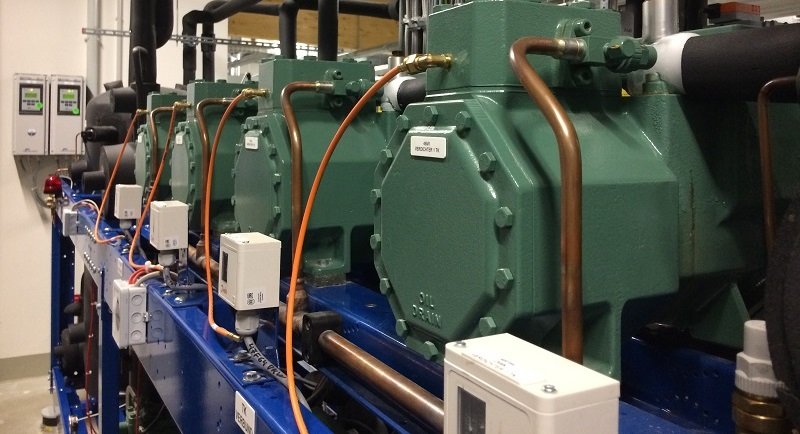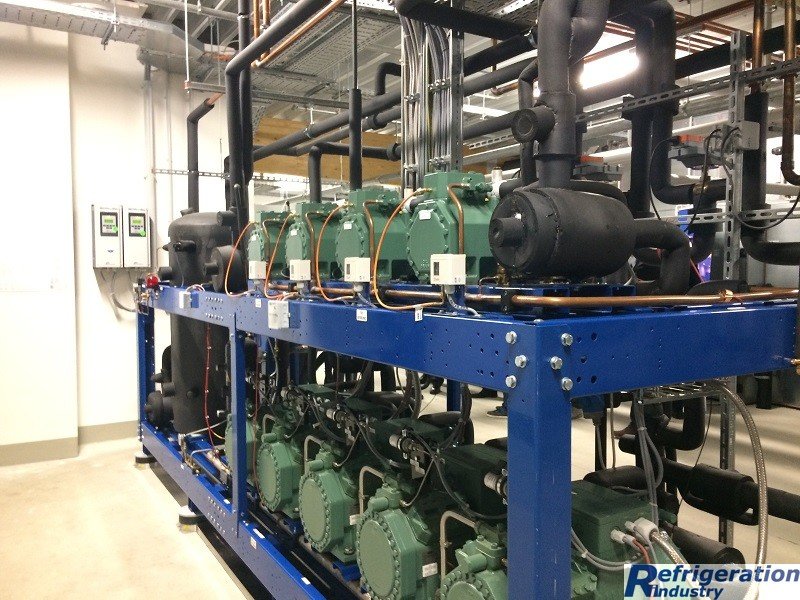A refrigeration unit is the basis of the refrigeration system. These units can be used to create a cold in the different temperature ranges:

The refrigeration unit operation depends largely on the compressor. As a rule, the reciprocating compressors are applied, but also there the other types of them too, for example, screw or spiral one. Depending on the operational tasks, single or multi-compressor plants are employed.
Refrigeration units of this type operate on the basis of one refrigerant cooled compressor. This ensures their compactness and simplicity of the exploitation. In addition, to buy the refrigeration unit of this type is much easier, since the selection of such unit is simple and the price for it is relatively small. Devices of this type are most often used to maintain specified temperatures parameters in the small chambers for storage of products and other goods that require cooling, as well as for the air conditioning of premises.

The simplest and cheapest single-compressor refrigeration units are designed for installation in the refrigerated furniture (showcases, cabinets, etc.) and equipped with the piston-like hermetically sealed compressors. They may have different capacities, depending on what tasks are assigned to them. Reciprocating compressors can also be used in the more powerful refrigeration plants capable of cooling the chambers and conditioning premises.
For high-temperature refrigeration machines, the spiral compressors are usually used.However, to date, this type of compressor is increasingly being used in the other types of refrigeration plants. A distinctive feature of spiral systems is their reliability, quietness and safety.
Together with the compressor, a capacitor can be installed on the frame. They are of two types: air and with the intermediate carrier (water used the most often).
For the particularly powerful refrigeration units, screw compressors are proposed. Due to high compressor speeds, this equipment can provide a performance up to the several megawatts.
Refrigeration units of this type are assembled from the several compressors on a single circuit in order to increase the total capacity of the plant and to be able to regulate the plant's capacity depending on the load at a particular time.

The main advantage of multi-compressor plants is the simplicity of a capacity control by connecting and disconnecting the additional compressors. Structurally, these devices are more complex, since they are equipped with the additional regulators and compensators for oil and refrigerants. This leads to increase in the number of pipe-lines and complicate the exploitation of devices.
In the multi-compressor plants, compressors of different types are used:
Some multicompressor units can simultaneously support two temperature modes, for instance, the medium and low temperatures, by installing two refrigeration circuits.
Sale of refrigeration units is carried out by the specialized companies. When choosing an equipment supplier, we recommend you familiarize yourself with the experience of the firm, the availability of a qualified staff of engineers and installers.